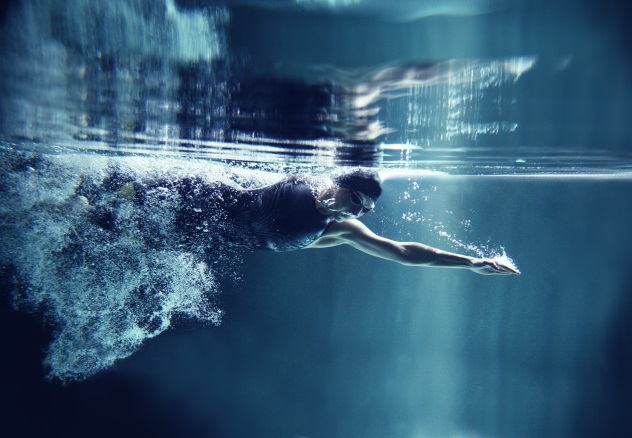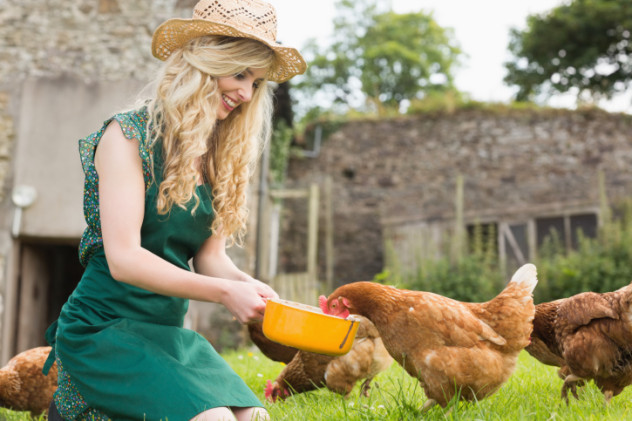 Weird Stuff
Weird Stuff  Weird Stuff
Weird Stuff  Animals
Animals 10 Inspiring Tales of Horses Being Human
 Mysteries
Mysteries Top 10 Haunting Facts About the Ghost Ship MV Alta
 History
History 10 Surprising Stories About the Texas Rangers
 Humans
Humans 10 Philosophers Who Were Driven Mad by Their Own Theories
 Miscellaneous
Miscellaneous 10 Video-Game-Worthy Weapons and Armors from History
 Weird Stuff
Weird Stuff 10 Psychics Who Accurately Predicted Wartime Events
 The Arts
The Arts 10 Pieces of Art Inspired by a Broken Heart
 Health
Health 10 Science Fiction-Sounding New Medical Treatments
 History
History 10 Surprising Facts About the Father of Submarine Warfare
 Weird Stuff
Weird Stuff 10 Times Real Laws Were Based on Bizarre Hypotheticals
 Animals
Animals 10 Inspiring Tales of Horses Being Human
 Mysteries
Mysteries Top 10 Haunting Facts About the Ghost Ship MV Alta
Who's Behind Listverse?

Jamie Frater
Head Editor
Jamie founded Listverse due to an insatiable desire to share fascinating, obscure, and bizarre facts. He has been a guest speaker on numerous national radio and television stations and is a five time published author.
More About Us History
History 10 Surprising Stories About the Texas Rangers
 Humans
Humans 10 Philosophers Who Were Driven Mad by Their Own Theories
 Miscellaneous
Miscellaneous 10 Video-Game-Worthy Weapons and Armors from History
 Weird Stuff
Weird Stuff 10 Psychics Who Accurately Predicted Wartime Events
 The Arts
The Arts 10 Pieces of Art Inspired by a Broken Heart
 Health
Health 10 Science Fiction-Sounding New Medical Treatments
 History
History 10 Surprising Facts About the Father of Submarine Warfare
10 Scientific Studies That Answered Bizarrely Specific Questions
How exactly did our universe come into existence? Is there an effective cure for cancer? What is the best way to get clean, sustainable energy? These are some of the far-reaching questions that scientists ask on a daily basis. Through their studies, they aim to resolve global dilemmas and advance humanity’s knowledge of our complex world.
And then there are these guys, who have spent their well-paid time answering peculiar questions that nobody else was asking.
10Do Dog Fleas Jump Higher Than Cat Fleas?

In the everlasting debate between “cat people” and “dog people,” one question has gone alarmingly unaddressed for years: Do dog fleas jump higher than their cat counterparts?
In 2000, a brave research team from the National Veterinary School of Toulouse set out to close this knowledge gap once and for all. Armed with plastic tubes and a bunch of perky fleas, the researchers set to work. They placed fleas of each species—Ctenocephalides felis (cat flea) and Ctenocephalides canis (dog flea)—into separate tubes and counted how many managed to jump out. The tubes started out at 1 centimeter (0.39 in) in height, then were gradually increased in 1-centimeter increments.
The dog fleas decisively won. The average height of a dog flea jump was 15.5 centimeters (6.1 in), compared to 13.2 centimeters (5.2 in) for the cat fleas. The best dog flea jumper reached a whopping 25 centimeters (9.8 in), while the cat flea record holder mustered a measly 17 centimeters (6.7 in).
With that, the question was put to rest for good, never to be discussed again . . . until another team of researchers studied the jumping abilities of no fewer than seven different species of fleas in 2003.
9Do Things Seem Smaller If You Lean To The Left?

Here’s a question you’ve probably never asked yourself: Will that tall building seem smaller if I stare at it while leaning to the left? That’s why we have scientists—to ask the tough questions so we don’t have to.
Some wise folks at the Erasmus University in Rotterdam devised a clever way to shed light on this under-researched issue. They invited 91 undergraduate students to stand on a Wii Balance Board, then they asked the students to estimate different quantities, ranging from populations of cities to heights of buildings. Behind the scenes—and unbeknownst to the students—the researchers manipulated the board to make participants stand straight or lean slightly to the left or right while making their estimates.
The researchers’ hypothesis was that we tend to visualize numbers along an invisible line, with smaller numbers on the left and higher numbers on the right. Therefore, leaning left can make us naturally think of smaller numbers when dealing with quantities. It may sound like the logic of your five-year-old nephew, but it turns out there’s at least some truth to it. The study confirmed that the estimates of the left-leaning crowd were notably smaller than those of the other participants. The experiment has likely also defined the least fun way to use a Wii Balance Board, but those conclusions are missing from the final report.
8What Force Is Needed To Drag A Sheep Across Different Surfaces?

Sheepshearing, like many jobs, involves some risks: Careless shearers can end up with severed fingers, and sheep may put up a physical fight in defense of their haircuts. Another strenuous activity and potential health hazard is the constant dragging of sheep to and from shearing stations. But how difficult is it, exactly?
That’s the question Australian researchers decided to answer in 2002. Work-related injuries among Australian sheepshearers were estimated to be six times higher than the national average, so it wasn’t exactly a frivolous study. Eight experienced shearers were invited to a game of drag-that-sheep. Five sheep also participated, though not quite as voluntarily as the shearers. The volunteers proceeded to drag the sheep across three different surfaces—steel, wood, and plastic. The surfaces also had varying inclines, to measure the different force required to do the dragging in each case.
The study concluded that the best surface for dragging sheep is a wooden one, sloped at a 1 in 10 incline, and ridged to reduce friction. The force required to drag a sheep in this case was 359 N, which is 15 percent less than that on the worst surface. Equipped with this knowledge, sheepshearers everywhere can now rework their wool sheds to minimize drag. Whether any of them will actually do so remains to be seen.
7Why Don’t Woodpeckers Get Headaches?

Woodpeckers are known for their uncanny ability to extract insects from trees and their maniacal, contagious laughter. But one thing we could never understand is how they manage to avoid painful migraines, despite striking trees with their beaks at the rate of 20 times per second. As one ophthalmology expert eloquently put it, “That is equivalent to striking a wall at 16 miles an hour—face first—each time.”
That’s why researchers decided in 2011 to study exactly how woodpeckers manage to avoid brain injuries. They filmed the birds’ pecking with high-speed cameras and measured its impact using a special force sensor. They also analyzed the structure of the woodpecker’s head and its effect on protecting the birds’ brains. They found that the “morphology of cranial bone and beak” are the primary factors in preventing impact injuries. It turns out that a bird that gets food by rapidly smashing its head against trees is carefully built to withstand such activity. Who would have thought?
6Could Humans Walk On Water?

When we hear that Jesus walked on water, we all have different reactions. Believers call it a miracle, skeptics call it a farce, and certain researchers immediately decide to find out whether it’s scientifically possible.
In 2003, a group of five European researchers set up an experiment that mimicked the way lizards run across water. They had to do that because, under normal circumstances, humans are unable to run fast enough to avoid breaking the water surface tension and sinking. We’re simply too heavy. But what if you tampered a bit with the laws of gravity?
In what was described as an “enormously goofy kind of slapstick engineering,” the experiment used a contraption comprised of a safety harness and a kiddie pool to do just that. Giddy participants were suspended above the pool and tried running across the water. The harness was repeatedly adjusted to simulate different levels of gravity.
In the end, the study concluded that humans can, in theory, run on water. However, we can only do so in a place where gravity is around 10 percent of what it is on Earth—say, Pluto. To walk on water, all you need is determination, physical fitness, and to be somewhere else in our solar system.
5Which Food Flavors Do Horses Prefer?

It probably won’t surprise anyone to learn that horses, much like people, don’t favor all foods in equal measure. Carrots just don’t taste the same as petroleum jelly, even if you’re a member of the equine species. While most of us are happy to leave it at that, some dedicated people insisted on determining the precise ranking of horse-preferred flavors.
To that end, a trio of UK researchers arranged a series of meticulous trials in 2005. Over the course of the trials, eight lucky horses were fed meals of flavored cereal by-products. At first, a total of 15 flavors were tested. The researchers recorded how fast the horses ate these flavors and how much of each meal they chose to leave behind. This helped the scientists narrow the flavors down to eight favorites. Then the researchers fed the horses paired combinations of these favorites to rank them in order of preference.
What did all of these delicious trials yield? The final ranking, in descending order—and you may want to write this down—is fenugreek, banana, cherry, rosemary, cumin, carrot, peppermint, and oregano. Now you know.
4Will People Swim Faster In Water Than In Syrup?

The answer to this question seems almost too obvious. With its gooey texture and thick viscosity, syrup is clearly a terrible fluid to swim in. But science doesn’t rely on assumptions. Science puts things to the test.
That’s why a pair of researchers created a test environment in 2004 to obtain a conclusive answer to this seemingly simple question. The pair filled a 25-meter (82 ft) swimming pool with guar gum, a food-thickening agent. The end result was a syrupy liquid, twice as thick as regular water and colorfully described as looking “like snot.”
Acquiring permission for this experiment was apparently the trickiest part of the ordeal, as it required 22 separate approvals from different authorities. They don’t just let you dump random substances into public swimming pools. Surprisingly, getting real people to swim in the “syrup” turned out to be the easy part. Sixteen volunteers took turns swimming in water and then the snotty mixture. Their times were thoroughly compared and, predictably . . . there was no measurable difference between the speeds in the water versus the syrup. How can that be?
The explanation seems to lie in the fact that, while syrup does provide more resistance for the swimmers to overcome, it also helps them generate more forward momentum by pushing against the thicker liquid. It appears that, sometimes, the answer isn’t as self-evident as we might expect.
3Do Chickens Prefer Beautiful Humans?

To us, most chickens look exactly the same. We are not wired to tell them apart or judge their attractiveness. By the same logic, how would chickens react to human faces of varying beauty? By now, you already know that someone has asked this question and arrived at a conclusive answer.
Researchers of Stockholm University trained six chickens to respond to pictures of humans. The chickens were presented with two average human faces—one male and one female. Roosters were rewarded for recognizing and pecking at the woman’s face, while hens were rewarded for doing the same to the man’s face. Pretty soon, the chickens learned to recognize generic human faces of the opposite sex.
That’s when things got interesting. Five more faces were artificially created from the two original pictures by manipulating their masculine and feminine traits. These were ranked by 14 undergraduates of both genders in order of attractiveness. Thereafter, the chickens got their chance to see the ugly and beautiful human faces and make their choice as well.
The results were quite fascinating: The chickens ended up ranking the faces along virtually the same scale as the students. While the scientists don’t have a solid explanation for this, they suggest that perhaps human—and chicken—sexual preferences arise from “general properties of the nervous system,” which would help explain the correlation. Regardless of its implications, the study does prove that we share our keen eye for beautiful faces with at least one trained group of domesticated fowls.
2Is Toast More Likely To Fall Butter-Side Down?

Almost everyone is familiar with the so-called “Murphy’s law,” which dictates that anything that can go wrong will do so. If there’s a single puddle on the street, you’ll probably step right into it. If you pick a line at the supermarket, it will be the slowest one. If you drop your buttered toast, it will land butter-side down on the floor and leave a nasty mess for you to clean up.
Most people conclude that fallen toast is more likely to land in such a way simply because that side is heavier. But not many of us will put this theory to as rigorous a test as Robert Matthews. He is a British scientist and journalist who has made it his life’s mission to prove that Murphy’s law exists, at least when applied to toast. In 1996, Robert published a theoretical paper on the subject, which earned him an Ig Nobel Prize (an award parodying the Nobel Prize).
Finally, in 2000, Robert got the chance to test his theory in the real world. In a series of experiments masterminded by Matthews, schoolchildren across the UK were asked to drop pieces of bread on the floor and record the way these landed. After almost 10,000 trials, the results were tallied up: In 62 percent of the cases, the bread did end up with the butter facing the floor, a result significantly higher than could be explained by chance.
Even more remarkably, however, butter itself apparently had little role in causing this phenomenon. Further tests, performed on butter-free toast, showed that the height of the table has a much more pronounced impact on how the bread lands. Only at heights above 2.4 meters (8 ft) did the bread start falling on either side equally. Why? Because bread dropped from a lower height often has no chance to make a full rotation before it hits the floor. Thus, it’s the standard height of our tables, rather than butter, that is the real culprit in making Murphy’s law a reality.
1Are US Troops More Likely To Be Constipated When Deployed?

Troops deployed in the field are often under a lot of pressure. They must remain on high alert in case of a surprise drill or a real emergency. On top of that, research shows that, apparently, their bowels are under quite a lot of pressure as well.
What motivated such research in the first place is not explained well, but in 1993, a so-called “bowel function questionnaire” was presented to 500 sailors and marines deployed aboard USS Iwo Jima LPH 2. The respondents had to keep track of their toilet successes and failures and fill out the questionnaire accordingly. The goal was to establish whether constipation occurs more frequently while soldiers are away from home and in the field. Proving that they take their study very seriously, researchers even used two different definitions of constipation—either a complete lack of bowel movements for over three days or stool accompanied by “anorectal complaints.”
So what was their conclusion? Soldiers are indeed far more likely to have constipation issues while in the field—around five times more likely, in fact. While at home, only 6–7.2 percent of soldiers were constipated, but a whopping third (30.2–34.1 percent) of them had toilet troubles while deployed. If we’re to learn anything from this study, it’s that laxatives should be mandatory equipment for all health-conscious troopers.
Daniel edits words for Listverse, writes words for Cracked, and does other stuff on his humor blog.








